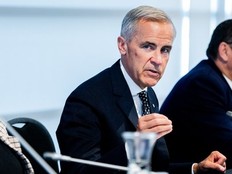OPINION: Bill C-5 has potential for both promise and peril for First Nations

Article content
As the Chief of the Mississaugas of Scugog Island First Nation (MSIFN), my commitment to fostering economic opportunities that respect our community’s rights, culture, and aspirations is a critical balance. Our Nation has made significant strides in clean energy and infrastructure investments, building sustainable revenue streams for the health of our FN, while ensuring that lands and species are protected for future generations, for all Canadians.
The introduction of Bill C-5, the One Canadian Economy Act, in the House of Commons is presented as a potential catalyst for economic growth through enhanced interprovincial trade, labour mobility, and streamlined project approvals. But will this growth be achieved with, or without, the partnership of First Nations? I see potential for both promise and peril in this legislation, particularly regarding First Nations’ participation in investments to bolster the Canadian economy.
In sectors like clean energy and infrastructure—where we are already making significant advances — Bill C-5 risks prioritizing non-Indigenous interests over FN’s constitutional rights and consultative obligations. This oversight will sideline Indigenous peoples’ rights for the sake of expedited resource extraction and economic development.
The Potential for Promise of Bill C-5
Bill C-5 contains two primary components which aim to dismantle trade barriers and expedite nationally significant projects. For our First Nation, this legislation holds the potential to significantly enhance our clean energy and infrastructure initiatives allowing us to reach broader markets nationwide, thus attracting the capital necessary to scale our operations. Our construction enterprises could benefit from increased labour mobility, generating more income for our community and the surrounding area. Our strategic location in the Lake Ontario Energy Corridor, linking from Toronto to the Ottawa River, puts us in a prime position to partner on significant clean energy and infrastructure efforts, creating revenue opportunities through equity stakes and Impact Benefit Agreements (IBAs) or co-developed community benefit agreements. These prospects connect with our vision for economic reconciliation — an approach where First Nations actively participate as essential partners in the collective prosperity of Canada.
Our leadership reflects our commitment to innovation, having driven over $100 million in investments in Canadian clean energy projects over the past year. Bill C-5 has the potential to amplify these efforts, enabling us to shape a thriving, environmentally conscious economy for all Canadians.
The Potential Peril of Bill C-5 – Risks of Incomplete Provisions
Despite the mainstream optimism surrounding Bill C-5, the promise is far from assured. The bill currently lacks comprehensive commitments to uphold Indigenous rights which will prioritize non-Indigenous economic interests over the inherent rights of Indigenous peoples and the health and prosperity of Indigenous communities.
The Building Canada Act aims to streamline project approvals deemed in the national interest. While this could enhance clean energy projects in which many communities are stakeholders, it risks undermining the Crown’s constitutional duty to consult Indigenous communities. Genuine consultation measures are not merely a formality; they are foundational to reconciliation. If treaty and traditional territories of Indigenous peoples are deemed by Canada as open for business, it lacks honourability for Canada to proceed without Indigenous peoples being consulted and having a say over their position at the economic table. Moreover, it is Indigenous communities who carry a lens of responsibility to the environment in the development of clean energy solutions. This is not out of an obligation to meet a minimum standard, but out of a duty to what Indigenous peoples know as sacred.
The Free Trade and Labour Mobility in Canada Act assumes equitable access to market opportunities for all communities. However, First Nations face systemic challenges like underfunded infrastructure and limited access to capital, which hinder a community’s ability to engage interprovincial opportunities. The bill’s silence on these pressing issues may exacerbate existing economic disparities, leaving Indigenous communities behind once again.
Charting a Constructive Path Forward
Bill C-5 has potential as an opportunity to serve as a transformative tool for both Canada and First Nations. But for this potential to be realized, it is crucial that the bill includes robust provisions to protect Indigenous rights, ensure meaningful consultation, and address the capacity challenges that First Nations face.
The effectiveness of Bill C-5 hinges on whether we choose to build a Canadian economy that includes First Nations as equal partners or one that perpetuates historical imbalances. The choice of barreling ahead “with” or “without” First Nations partners will shape Canada’s economic landscape for generations to come.
Kelly LaRocca is the Chief of the Mississaugas of Scugog Island First Nation, located near the town of Port Perry, Ont.











Postmedia is committed to maintaining a lively but civil forum for discussion. Please keep comments relevant and respectful. Comments may take up to an hour to appear on the site. You will receive an email if there is a reply to your comment, an update to a thread you follow or if a user you follow comments. Visit our Community Guidelines for more information.